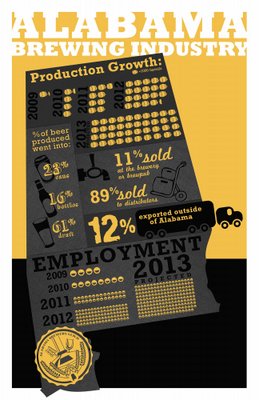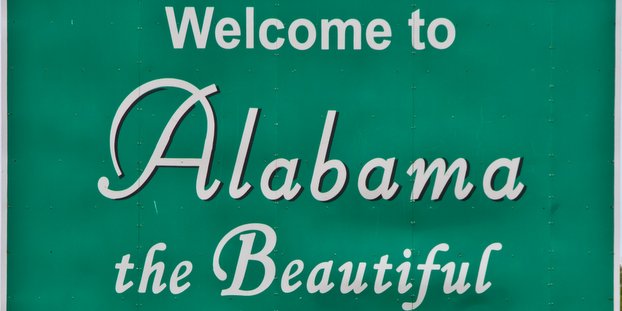
A great part about the craft beer boom is how it is comprised of all sorts of mini-booms across the country. There are the bell cows of the movement, like Colorado, that came early to the party and sport hundreds of local flavors, and then there is the fledgling brew market of a state like Alabama, which, after a series of legal and regulatory updates the last few years, is starting to make its mark.
The info from the 2013 Alabama Brewers Guild survey highlights the growth in this fertile brewing ground. With 94 percent industry participation, the study showed that the brewing industry in Alabama has experienced triple-digit growth each year since 2009.
Participants paid taxes on 19,301 barrels (bbls) of beer in 2012, up 118 percent from the previous year. The study projects a conservative estimate of 38,944 bbls in 2013, another 102 percent gain.
“It is clear that the craft brewing industry in Alabama has flourished in an otherwise stagnant economy. Right now, our largest concern is growing to meet demand,” said Jason Wilson, founder of Back Forty Beer Co. and president of the Alabama Brewers Guild.
Here is how all of that production breaks down right now:
- In terms of packaging in 2012, 61 percent of production was in a barrel or keg, 23 percent in cans and 16 percent in bottles.
- Eighty-nine percent was sold to distributors; 11 percent was sold on site.
- Eighty-eight percent of sales were in Alabama; 12 percent were out of state
Clearing the legal hurdles
According to Dan Roberts, executive director of the Alabama Brewers Guild, the brewing industry in Alabama really began to flourish in 2009 with the passage of the Gourmet Beer Bill.
“Small breweries thrive by innovation. Before the law changed in 2009, breweries were prohibited from producing many high-quality and experimental beer styles. There are 12 breweries and brewpubs operating in Alabama right now. Ten of those businesses were created after the laws started changing in 2009.”
Since 2009, other restrictions on beer production have been eased. When the current Alabama Code was written in 1975 it did not account for microbreweries, but the guild reports that the situation is improving. Wilson points to a 2011 change that allowed limited on-site sales at production breweries.
“These tap rooms are essential in fostering the relationship between brewers and their community,” he said.
In addition, the breweries and brewpubs participating in the survey directly employed 85 individuals at the end of 2012, up 204 percent from the previous year. The breweries and brewpubs participating projected that they will directly employ 189 professionals by the end of 2013, a 122 percent increase from 2012. Of the respondents to the survey, 62 percent were breweries and 38 percent were brewpubs. Brewpubs were asked to only include employees participating in beer production, not restaurant staff.





RT @CraftBrewingBiz: Better know a craft beer guild: Learn about the Alabama Brewers Guild @alabamabrewers http://t.co/r2niKG4jmL
RT @CraftBrewingBiz: Better know a craft beer guild: Learn about the Alabama Brewers Guild @alabamabrewers http://t.co/r2niKG4jmL
RT @CraftBrewingBiz: Better know a craft beer guild: Learn about the Alabama Brewers Guild @alabamabrewers http://t.co/r2niKG4jmL